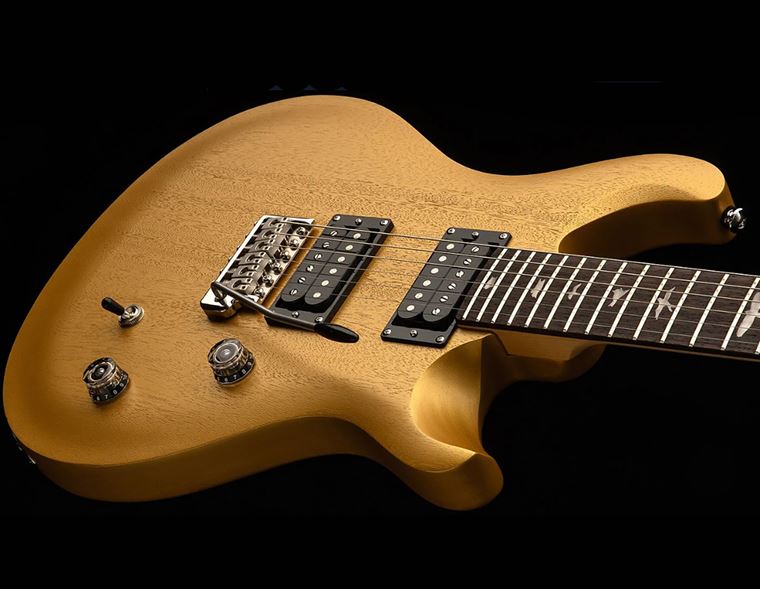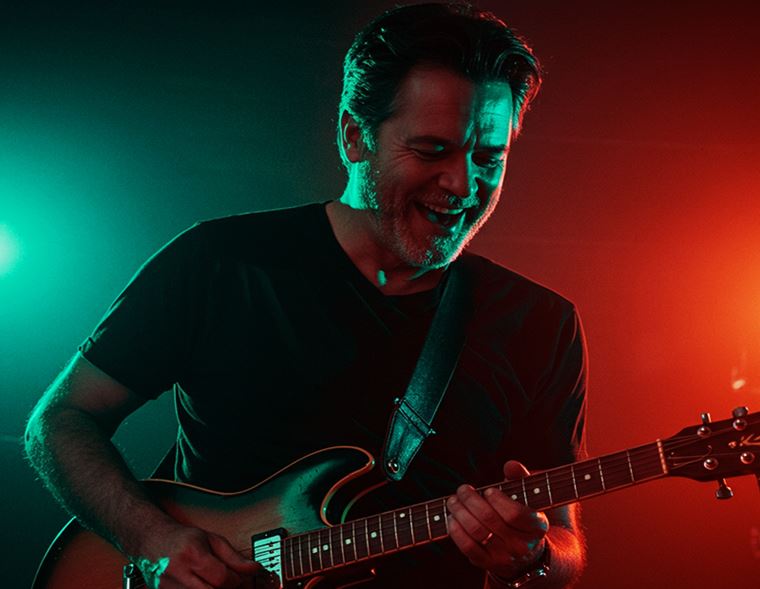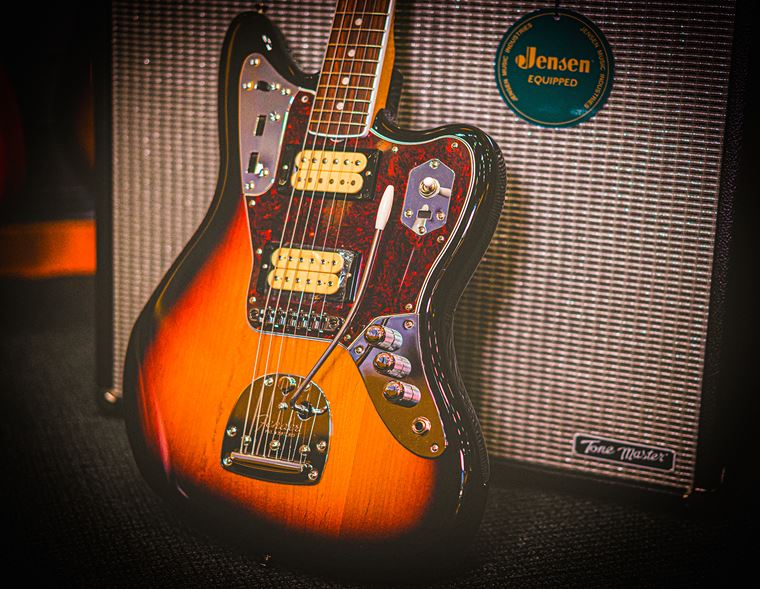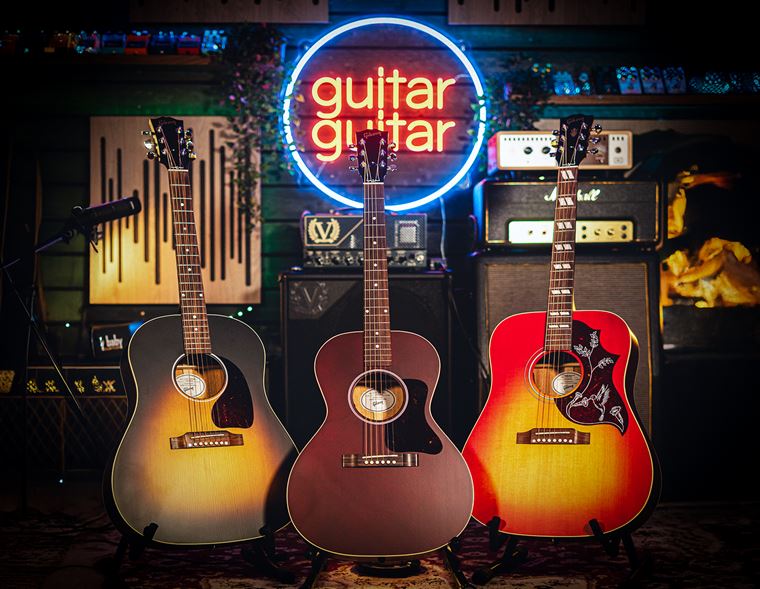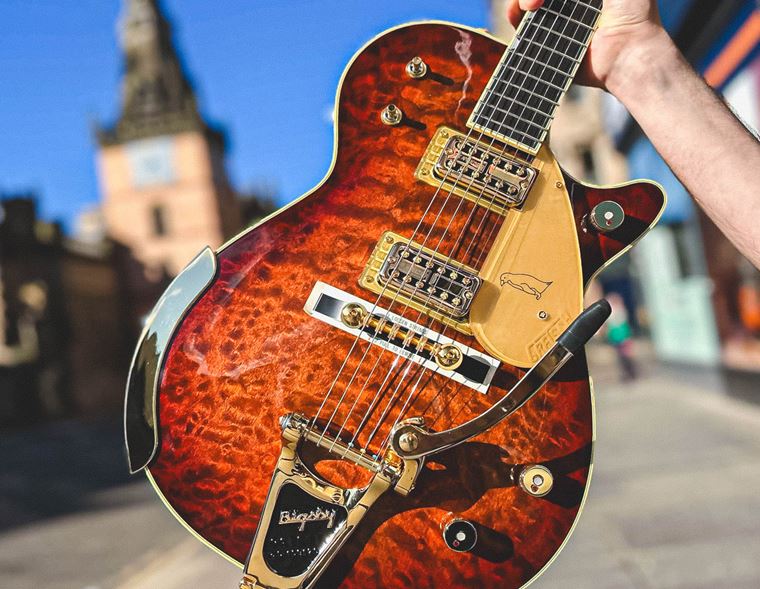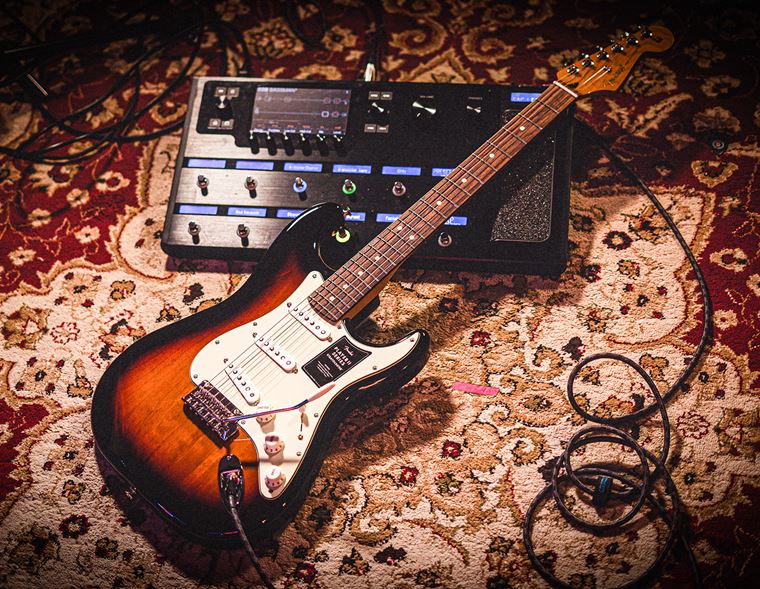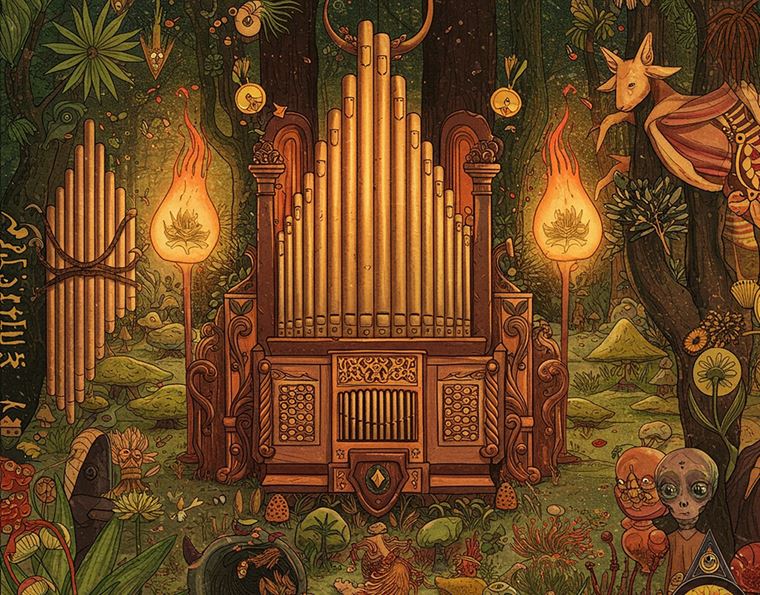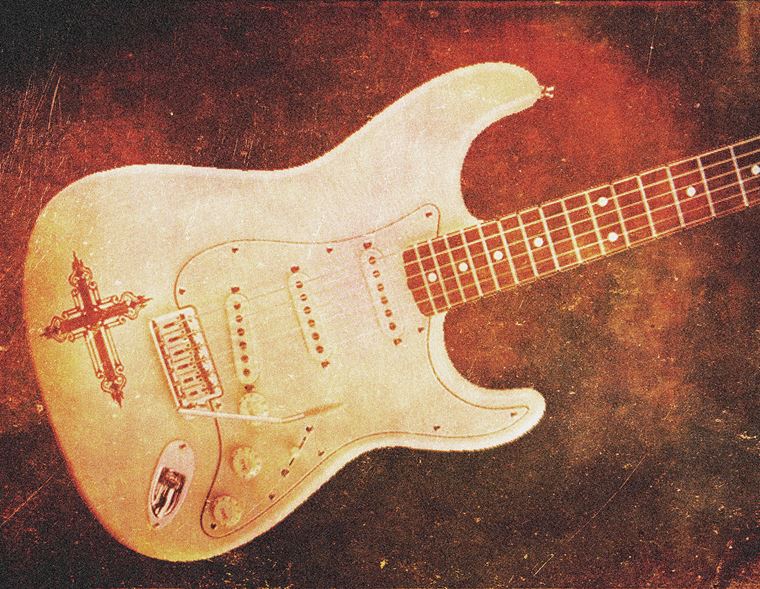Brief Guide: Metal Sub-Genres
What particular flavour of Metal do you prefer?
To outsiders, it can all seem a bit similar: heavy guitars, loud drums, angry vocalists...but for those on the inside, there are so many different takes on what ‘Metal’ can be. Loving Metal generally does mean you love all genres, either. This is a seriously tribal thing, and Metal fans tend to incorporate their preferences into their very personalities, so allegiance is much more important here than in, say, Jazz.
We thought, as fans of many musical styles including various Metal sub-genres, that we’d take a look at these myriad tribes and make an attempt at differentiation. Why? Well, there is no more ‘guitar’ genre out there than Metal, is there? For guitar fans, there’s an endless flow of incredible music you can access through Metal.
And, because of this highly disparate collection of sub genres branches, you can really home in on the type of sound that works for you, avoiding those that don’t. For example, if you grew up liking Killswitch Engage, for example, you may well find that you also love Pantera. We sincerely hope you’ve already checked out Pantera, but you get the point: Pantera fans won’t necessarily enjoy Celtic Frost or Saxon, but they may love Deftones. If you love big riffs but hate screamed vocals, stay away from Metal Core and Black Metal, as different as they are. If you love straight ahead rockin’, we don’t think Prog Metal will be your thing. And so on.
That’s the beauty of it all: there are loads of different shades of ‘heavy’ and you can pick out the ones that appeal to you and didge what doesn’t.
So, this overview may help in the first instance of which paths to walk down. You’ll find, as we did, that some bands fall into many genres, so you’ll have to give us a little leeway as we negotiate these treacherous roads. We’ll have missed some out for sure, and made some decisions that you just don’t agree with. Awesome! Let us know! We’ve opted for a semi-chronologic order, but deviated from it wilfully when it felt like the correct decision.
Here we go. Stick on the Riff-Lords of your choice and dive in to guitarguitar’s Brief Guide to Metal Sub-genres!
Original Metal
For OG Metal, one band gets it. No, we are not going to get into any chat about how Steppenwolf coined the term ‘heavy metal thunder’ because they aren’t metal in the slightest. The first, and most significant Metal on the planet, is obviously Black Sabbath. How could it be any other way? From the lurching, demonic riffs, to the occult imagery (both visual and lyrical), Sabbath are at the heart of everything Metal.
Heavy Metal
Following Sabbath came a number of bands who were actively described as Heavy Metal. In the past, all Metal was Heavy Metal, but the ‘Heavy’ prefix seems to now apply to slightly harder Rock bands from the 70s. Deep Purple and KISS actually fall into this camp, strange as it may seem now. Judas Priest rule the roost here, though, for their dedication to studded leather and theatrical flair, including extra points awarded to Rob ‘Metal God’ Halford’s enduring habit of wearing spiky codpieces and riding motorcycles onto the stage. We salute you, sir. They are also blatantly more Metal sounding than the somewhat similarly attired Kiss. Gene Simmons is all talk...
NWOBHM
Yes, the big acronym! The New Wave of British Heavy Metal was a silly term coined by journalists in the very late 70s. It referred to the Metal that rose up after Punk’s year zero, bringing back things like guitar solos, long hair and songs about ghosts and dragons. Saxon are an early example of such a band (allegedly also the inspiration for Spinal Tap) but the most obvious, and clearly greatest, example of this sound is the mighty Iron Maiden. Huge sounding, theatrical and steeped in their own mythology, Iron Maiden had iconic riffs, galloping rhythms, massive anthemic choruses and a killer mascot in the guise of ‘Eddie’. They still do, in fact: after 40 years of writing and performing, they are still at the top of their game. Iron Maiden are lynchpins of Metal for everyone.
Note: ownership of a Maiden t-shirt does not guarantee evidence of actual fandom.
Thrash Metal
Thrash Metal is a sound encompassed by tight, fast riffing with a particularly ‘scooped’ guitar sound (take those mids right out and bin them) and usually slightly manic, tenor vocals. Thrash started out in the 80s in California’s Bay Area, and many of the top names are still going strong today. The sound blended NWOBHM with Hardcore Punk but made it all a little faster and meaner. Pioneers include Exodus (read our Interview with Exodus’ Jack Gibson) and Metallica. Other notable Thrash bands include Megadeth, Anthrax, Testament and Slayer, the last of whom you’ll also find in the following sub-genre...
Death Metal
Death Metal is a mix of Thrash and Black Metal, which we look at next. Death Metal, in reality, can assume a few shapes, such as Behemoth’s Blackened Death Metal (read our Interview with Nergal) but, generally speaking, Death Metal takes Thrash, makes it heavier, tunes it lower and makes more of a thing out of the drums. Also, the vocals are entirely different: this is where you’ll hear ‘Death Growls’, which are low, guttural and mostly incomprehensible vocals stylings that are appropriately monstrous. Subject matter is often horror/gloomy/dark, as you’d likely expect. Slayer can be called Death Metal (with the exception of the vocals) for all of these reasons. Great examples of Death Metal include Kreator, Death and early Opeth.
Black Metal
True Black Metal is, like Thrash, geographically particular to Scandinavia. Black Metal favours intentionally noisy production, savage (i.e. thinner) guitar sounds, vocals that sound like witches rather than monsters and even more unrelenting drums. Black Metal as a scene caused many headlines in the early 90s due to church burnings and band members murdering each other. The first wave, in the 80s, is the result of bands like Venom and Celtic Frost. The second wave, and the controversy, are largely the work of Mayhem. Confrontational and uncompromising opposition to mainstream religion is one of the main focuses of Black Metal.
Glam Metal
Glam Metal is one name for it, but another is Hair Metal. To be honest, it’s hardly really Metal at all, as great as it is! It’s like sleazy/party pop with rocky riffs and spectacular guitar solos to accompany the spectacular hair and clothes. Van Halen started this off in 1978 and the genre got fully into its swing in the early 80s with bands like Motley Crue and Poison. This genre flits between being laughed at as out of date and lovingly embraced as music from a more carefree time. Both perspectives are pretty accurate.
Groove Metal
Somewhere in the early 90s, Pantera stopped being a flamboyant Glam Metal band and invented the sound of modern Metal. Huge riffs welded on to swaggering rhythms, intense vocals and perhaps one of the most gifted guitarists since Eddie Van Halen in the form of Dimebag Darrell were all part of the gumbo that made Pantera not only a huge success but massively influential. Other great groove metal bands include Lamb of God (read our Interview with Mark Morton) and Sepultura.
Nu Metal
Although the first image that springs to mind when you mention Nu Metal is inevitably Fred Durst’s red baseball-capped head getting itself firmly ‘in your grill’, the real definers of the sound were Korn. Infusing hip hop beats and slowed down tempos, Korn made personal angst and small-town harassment into a huge, bruised, lurching movement. Korn also single-handedly made 7 string guitars part of the musical lexicon of metal. Many imitators came and went, but Korn still remain innovators.
Having said that, the genres biggest stars by far are Slipknot. Their inclusion as a Nu Metal band are based more on chronology than sound: in truth, Slipknot (read our Interview with Jim Root) are a sonic amalgamation of many subgenres of Metal. Twenty-some years on, the masks are still firmly in place, as is the barely-concealed psychopathic intensity. Other significant Nu Metal bands include Deftones and System of a Down, both of whom could comfortably fit into the ‘Alternative Metal’ bracket, too.
Metal Core
Metal Core could be seen as a development of Nu Metal. Like Thrash in the 80s, Metal Core blended Metal with Hardcore Punk, though this iteration also embraced the low tunings of Nu Metal and incorporated ‘breakdowns’ in the music, which basically meant slower bits. Kilswitch Engage (read our Killswitch Engage Interview) are the scene’s stand out act. Other Metal Core bands include Parkway Drive and As I Lay Dying.
Doom Metal
Doom Metal takes the portentous riffing of Black Sabbath and slows the tempo, drops the tuning, and dials up the despair. Slow, crushing riffs and lyrics about Apocalyptic events help define Doom Metal. Pagan Altar and Candlemass were early innovators, whilst today, bands like Boris and Amenra bring Doom to audiences across the world.
Sludge Metal
Cool name! Sludge Metal is very similar to Doom, but is slightly faster in tempo (‘faster’ is the wrong term, it’s still downtempo stuff) and more groove based, kind of like a slower Pantera. Crowbar and Eyehategod are two good examples of Sludge metal.
Stoner Metal
Stoner Metal is similar to those two previous genres, though the riffs themselves are definitely more Blues-based. Almost like a slower Queens of the Stone Age, Stoner Metal is all about baking in the hot desert Sun and playing slow detuned riffs. Check out Sleep and Electric Wizard. Again, the spirit of Sabbath is very noticeable in this genre.
Power Metal
Power Metal has a distinctly ‘Dungeons and Dragons’ vibe about it, much like many of the NWOBHM from two decades before. Power Metal is melodic, with songs that often tell narrative, fantastical stories. Still very heavy on the guitar pyrotechnics, this genre harkens back to the slightly silly but fun golden age of Metal. Dragon Force and Kamelot are two significant Power Metal bands.
Symphonic Metal
Symphonic Metal is very similar to Power Metal, but goes one better by introducing keyboards and string sections to increase the melodrama. Classical elements about, though very much in a Metal context. Night Wish are the primary Symphonic Metal band for many, followed by Within Temptation.
Industrial Metal
Including keyboards in an entirely different way to Symphonic Metal, Industrial Metal has a distinctly computerised, futuristic sound. This genre came around in the 80s with bands like Ministry (read our Ministry Interview), who brought savage guitar sounds to combine with evil samples and stuttering synthesizers. The most famous Industrial Metal band are undoubtedly Nine Inch Nails (read our Robin Finck Interview), who brought catchy melodies to the dystopian soundscapes. Fear Factory brought frankly enormous riffs to the digital fore in the 90s hinterland between Grunge and Nu Metal. Today, bands like 3Teeth (read our 3Teeth interview) carry the sound into the current era.
Gothic Metal
Though lots of Metal genres could be considered gothic, some bands definitely make it more of a priority than others. Gothic Metal bands like Paradise Lost and Lacuna Coil meld a grandiose sadness with riffs influenced by Thrash and Doom. Stylistically similar in ways to Symphonic Metal, the overall aesthetic and lyrical tone is perhaps what differentiates.
Alternative Metal
Alternative Metal is essentially a harder take on 90s Alternative Rock. Heavy Grunge, if you like, but with an emphasis on Metal riffing that isn’t necessarily inherent in the Seattle scene at large. Having said that, there is perhaps no more perfect an example of Alternative Metal than Alice in Chains, whose Doom-influenced riffing and decidedly eerie take on vocals and subject matter are more Metal than anything else. Another example of Alternative Metal that’s entirely different would be System of a Down.
Prog Metal
Prog Metal has moved and shifted in scope over the years. It could be fair to say that King Crimson started things off in the 70s with Red, before coming back with more brutal sounds in the 90s. After that, we’d regard Prog Metal as any Metal that features non-standard time signatures and extended song lengths.
Tool are probably the world’s most famous Prog Metal band. Meshuggah are more intense (therefore less popular) but are arguably almost as influential, certainly on other bands within the genre. Devin Townsend (read our Interview with Devin Townsend) is one of the most significant players on the scene, not only for his solo material but for his seminal Metal band, the now-iconic Strapping Young Lad. Other significant Prog Metal bands include Opeth and Mastodon.
Djent
Djent is a genre term for the percussive sound made by palm muting your guitar as you lay into it. Djent is an extension of Prog Metal, and features lots of elements from Metal Core too. Complicated riffs and unusual time signatures are a requirement for this sound, which is typified by Periphery (watch our interview with Periphery’s Misha Mansoor below), and would also include Haken (read our Interview with Haken) and Tesseract.
Post Metal
Post Metal largely does away with vocals (though not entirely) and makes use of long-form build ups and dramatic crescendos. Riffs are most certainly still there, something that helps distinguish Post-Metal from Post-Rock. The genre name itself is pretty ridiculous (how can you be Post Metal if Metal is still a thing?), though it’s more a description of a sensibility than a musical statement. Some great Post-Metal bands include Neurosis, Pelican (read our Interview with Pelican) and Isis.
Avant-Garde Metal
The Metal equivalent to Concept Art, where the idea of the music is as important as the resulting pieces of music themselves. We hasten to name them ‘songs’, not because we are being derogatory, but because we aren’t sure that songs are the intention. A band such as SUNN O))) (read our SUNN O))) interview) is the very embodiment of Avant-Garde Metal: their 10-minute pieces of music regularly have long, sustaining single drones of fuzz and little else. Still, it’s intense, bold music which lots of people love, and their dedication to hooded robes and terrifyingly loud amplifiers makes them most definitely Metal.
Final Thoughts
Well! Now that is a bunch of genres! We didn’t delve into the split-genres either (Post-Doom or whatever) because then we’d never get to the end.
How did we do?
Did we get all of the main genres? Was there a glaring omission? Do you disagree with our assessment? Hopefully we threw enough of the right dirt onto the right buckets, but please let us know your thoughts on these, and any other, Metal sub-genres! It’s more a bit of fun that a strict rulebook, anyway. Metal is forever evolving, expanding and breaking rules!
Thanks for reading, we hope you enjoyed!




